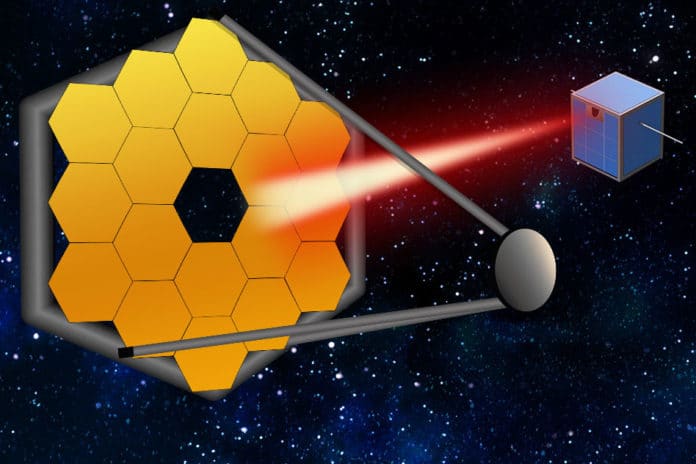There is a lot of importance of powerful tools such as telescopes in the field of astronomy. Telescopes can allow resolving fine details. Even more, engineers are developing much bigger telescopes in space, with light-gathering mirrors as wide as those of the largest ground observatories.
For example, the segmented telescopes are being developed with multiple small mirrors. But the challenge is to keep the mirror segments stable and pointing collectively toward an exoplanetary system.
Such telescopes would be equipped with coronagraphs — instruments that are sensitive enough to discern between the light given off by a star and the considerably weaker light emitted by an orbiting planet. But the slightest shift in any of the telescope’s parts could throw off a coronagraph’s measurements and disrupt measurements of oxygen, water, or other planetary features.
MIT engineers now proposed another shoebox-sized spacecraft consisting of a simple laser. The spacecraft could fly at a distance from the large space telescope and mimics as a guide star, to provide a steady, bright light near the target system that the telescope could use as a reference point in space to keep itself stable.
According to engineers, this laser guide star would be feasible with today’s existing technology. It could relax the demand for precision in a large segmented telescope, saving time and money, and allowing for more flexible telescope designs.
Ewan Douglas, a postdoc in MIT’s Department of Aeronautics and Astronautics said, “This paper suggests that in the future, we might be able to build a telescope that’s a little floppier, a little less intrinsically stable, but could use a bright source as a reference to maintain its stability.”
The idea arose from a project that was funded by NASA. The agency has been considering designs for large, segmented telescopes in space and tasked the researchers with finding ways of bringing down the cost of the massive observatories.
Douglas said, “The reason this is pertinent now is that NASA has to decide in the next couple years whether these large space telescopes will be our priority in the next few decades. That decision-making is happening now, just like the decision-making for the Hubble Space Telescope happened in the 1960s, but it didn’t launch until the 1990s.”
For this new study, the researchers looked at whether a laser, integrated into a CubeSat or slightly larger SmallSat, could be used to maintain the stability of a large, segmented space telescope modeled after NASA’s LUVOIR (for Large UV Optical Infrared Surveyor), a conceptual design that includes multiple mirrors that would be assembled in space.
Researchers have estimated that such a telescope would have to remain perfectly still, within 10 picometers — about a quarter the diameter of a hydrogen atom — in order for an onboard coronagraph to take accurate measurements of a planet’s light, apart from its star.
To check whether such a laser guide star design would be possible with the current laser technology, engineers collaborated with associates at the University of Arizona to think of various bright sources, to make sense of, for example, how bright a laser would need to be to give a specific measure of data about a telescope’s position, or to give provide stability utilizing models of segment stability from large space telescopes.
They at that point drew up a lot of existing laser transmitters and determined how steady, strong and far away every laser would need to be from the telescope to go about as a dependable guide star.
They found that the laser guide star designs are feasible with existing technologies and that the system could fit entirely within a SmallSat about the size of a cubic foot.
Douglas said, “A single guide star could conceivably follow a telescope’s “gaze,” traveling from one star to the next as the telescope switches its observation targets. However, this would require the smaller spacecraft to journey hundreds of thousands of miles paired with the telescope at a distance, as the telescope repositions itself to look at different stars.”
Instead, Douglas says a small fleet of guide stars could be deployed, affordable, and spaced across the sky, to help stabilize a telescope as it surveys multiple exoplanetary systems.
The paper published in the Astronomical Journal– includes Kerri Cahoy, associate professor of aeronautics and astronautics at MIT, along with graduate students James Clark and Weston Marlow at MIT, and Jared Males, Olivier Guyon, and Jennifer Lumbres from the University of Arizona.
